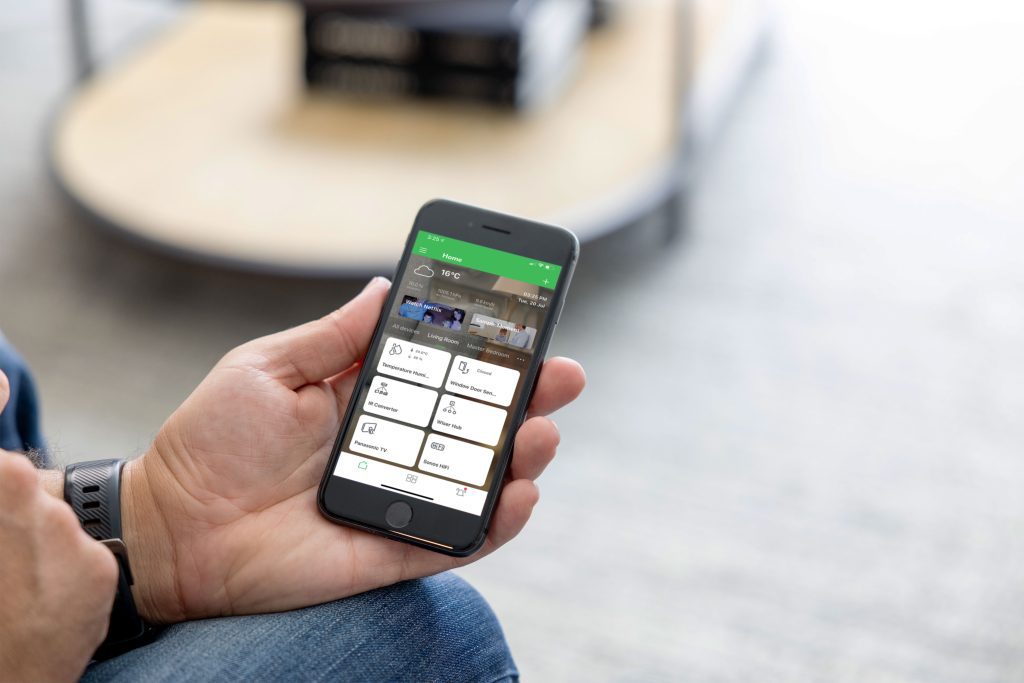How much electricity does your fridge, dishwasher, and EV charger use?
For efficiency-minded people, it makes sense to ask how much electricity does a fridge use— it’s one of the largest appliances in your home and constantly on. But what about other electronics and appliances? How much electricity does your dishwasher use? And if you have one (or are thinking of purchasing one in the future), how much electricity does an EV charger use?
In this article, we’ll break down the average electricity consumption of a refrigerator, dishwasher, and EV charger—and we’ll share some efficiency tips along the way. After all, with rising energy prices, understanding device-level usage and what’s using the most energy is paramount when trying to lower your electric bill.
Table of Contents
- How much electricity does a refrigerator use?
- Ways to reduce the electricity consumption of your refrigerator
- How much electricity does a dishwasher use?
- Ways to reduce the cost of running your dishwasher
- How much electricity does an electric car use?
- How much electricity do other home appliances use?
- Monitor and control your energy use to save money
- Data drives smart, efficient decisions
How much electricity does a refrigerator use?
A standard refrigerator/freezer combo uses between 300 and 800 watts of electricity, on average. Factors affecting the electricity consumption of your fridge include the age of your refrigerator, where it’s located in your home, and how much food you store. For example, if you pack your fridge to the brim, airflow around food is restricted, which requires more energy to keep things cold.
It’s also important to note that refrigerators actually have a lower “running” wattage than what’s stated on the unit because they cycle on and off throughout the day. According to EnergySage, a good rule of thumb is to divide your fridge’s rated wattage by three to estimate actual energy use. If you have a 500-watt refrigerator, you’re actually using about 150 – 175 watts most of the time. This amounts to approximately 1,463 kilowatt-hours (kWh), which is important to know since that’s the per-unit rate of electricity that your utility charges.
Speaking of your electric bill, how does all of this translate? The national average price of electricity hovered around $0.14 per kWh (it shot up to $0.16 in late 2022) and the average home’s total consumption is 10,632 kWh a year, which totals $1,452.12 yearly. So, in other words, your fridge accounts for a bit more than 10% of the average home’s total electric bill. Of course, that varies depending on the electricity rates in your state. This helpful chart from EnergySage spells out monthly and yearly costs to run a refrigerator by state.
Ways to reduce the electricity consumption of your refrigerator
Purchasing a smart or energy-efficient fridge, such as an ENERGY STAR® appliance, is one way to reduce the electricity consumption of your refrigerator. These pricier units not only use energy more efficiently, they often feature energy monitoring features to track your actual energy consumption. But if you’re not in the market to purchase a new refrigerator, there are still ways to make your unit more efficient.
- Clean your condenser coils. Allowing dirt to build up on your refrigerator’s condenser coils forces the fridge to work harder to keep food cold. This results in increased energy consumption, a higher electric bill, and a reduced lifespan.
- Follow the three-fourths rule. A good rule of thumb is to keep your refrigerator three-fourths full to help with efficiency. It’s less work for your fridge to maintain the temperature when there’s more food to take up space, but you still want to ensure good air circulation. But keep in mind, food waste is no better than energy waste!
- Encourage airflow around your fridge. Your refrigerator should have at least one inch of space around the exterior to allow air to circulate. If there isn’t enough room for adequate airflow, your refrigerator must work harder to keep things cold, resulting in increased electricity consumption of your refrigerator.
How much electricity does a dishwasher use?
A dishwasher is another kitchen staple that contributes to your monthly bill. On average, most dishwashers use 1,800 watts of electricity, so if you run it for an hour, that’s 1.8 kWh. In the U.S., the average cost per kWh is 14 – 16 cents, so running your dishwasher for one hour, five days a week, would cost you about $1.44 per week. Again, this may vary depending on your local electricity rates, and in places like the Northeast or West Coast, the average cost per kWh can be as high as 21 cents. Additionally, most modern dishwashers run for more than one hour—some for as long as four hours. Paying $1.44 per week might not seem like much, but if you live in an area with a higher rate and your dishwasher runs for four hours, that cost could jump up to $10 per week, or $40 a month (that’s what a gym membership costs!).
What about handwashing your dishes? This might seem like a money-saving route, but consider that most modern dishwashers use up to nine times less water than handwashing dishes. Depending on how much hot water you run during your average dishwashing-by-hand session, the cost savings question may end up as a wash, energy use-wise (pun intended!).
Ways to reduce the cost of running your dishwasher
Similar to a refrigerator, the age of your dishwasher and whether or not it’s an efficient model (like ENERGY STAR) does factor into electricity savings. But there are a few things you can do to help further cut costs.
- Run your dishwasher at night. Time of use (TOU) rates occur when the price of electricity changes based on the time of day. Often, prices are cheaper at night because of lower demand. Try to auto-delay running your dishwasher overnight to take advantage of lower rates.
- Only run full loads. Make sure your dishwasher is completely full before running a load. This makes the most of your energy and water usage.
- Let dishes air dry. If you have the time, let your dishes air dry versus drying in the dishwasher. This helps cut down on energy used to heat the dishwasher for drying.
How much electricity does an electric car use?
Refrigerators and dishwashers have been standard in homes for decades. But with the rise in digitization and electrification, a new innovation is coming to more and more homes—electric cars. How much electricity does an EV charger use? And how will this affect your bill?
In general, a Level 2 EV charger uses about 7,200 watts when charged at home, but that number varies depending on the mode and type of home charger you have. There are three levels of EV chargers—1, 2, and 3. Most vehicles use a Level 2 for daily charging. The higher the level, the faster the charging process, and the more power it uses. The type of vehicle you purchase determines how much power it can accept.
Additionally, how much you drive your EV plays a role into how much electricity it uses to charge. According to EnergySage, the average American drives 14,000 miles per year. An EV consumes about 0.35 kWh per mile driven. If you do the math, that equals about 406.5 kWh per month. Based on the U.S. average electricity rate, this can run consumers about $58 per month, or $695 per year to charge an EV, but varies based on your state’s electricity rate.
Compare a $58 monthly fill-up to a typical gas-powered vehicle, and you see why so many people are switching to EVs based on fuel prices. Overall, fueling EVs costs about one-third of the price of fueling gas-powered cars, on a mile-for-mile basis. The 14,000 miles driven per year on average, when divided by a 25.4 mpg national average fuel economy, gives you the average annual amount of gallons of gas consumed per driver: 551. Multiply that by the national average gas costs $3.42 (as of January 2022) and you get a total monthly fuel cost of $157.09. But if you drive an old truck in a state like California where gas is pricy, and that monthly cost could be much higher.
Although electric cars are less expensive to operate than gas-powered vehicles, there are other factors to consider. According to the U.S. Energy Information Administration, the average American uses 886 kWh per month, so an EV charger will potentially increase your home’s existing energy use by 50% and thus may require an upgraded electrical service. An EV frequently saves you money in the long run, but it’s important to note the upfront costs and increased home energy usage before taking the plunge.
Pro tip: If you live in an area with a TOU rate, charging your EV overnight during off-peak hours can help save money.
How much electricity do other home appliances use?
We’ve covered some of the bigger potential energy hogs in your home, but what about other devices? Energy.gov offers an appliance energy calculator to help you estimate electricity costs for a variety of devices. However, these numbers are just estimates, and as we’ve discussed, actual performance will vary.
Until recently, it was impossible to know the exact real-time and historical consumption of your actual home’s devices. That’s no longer the case. With a device like the Schneider Energy Monitor, you can see exact data on your appliances’ energy usage. And it’s not just your the electricity consumption of your refrigerator or your dishwasher—it’s everything in your home that draws power. Lights. TVs. Dehumidifiers. You name it.

Monitor and control your energy use to save money
Why would you want this level of visibility over your home’s energy use? Keep in mind that the three electronic devices discussed in this article are only a fraction of your home’s total energy consumption—and thus only a fraction of your electric bill. There are other places where energy waste hides. And until recently, it was really hard to find and eliminate it. Fortunately, there’s a solution that helps you take control of your energy usage and increase savings.
The Schneider Energy Monitor breaks down energy usage at the device level, showing you exactly how much energy each device or appliance consumes on a mobile app. With this data at your fingertips, you can make changes to save money, like running your dishwasher at night, for example, and see the result in real time. The Schneider Energy Monitor also helps you schedule around high TOU rates to drive even higher cost savings.
You can also diagnose problems faster once you know the average usage for a particular device. For example, if you know the average electricity consumption of your refrigerator, seeing your usage spike tells you there could be a problem, such as a failing condenser. Or perhaps you notice your AC unit is working much more than usual in the spare bedroom—perhaps it’s because your recent guest left the window cracked open, letting all that hot humid summer air inside? The Schneider Energy Monitor helps you spot those issues.
Additionally, consider using smart plugs, like the Square D™ X Series Wi-Fi receptacles. By making any switch smart, you can use the data you’ve gathered to put the appliance on an automated schedule, conserving energy when it doesn’t need to be on. These X Series switches and outlets connect with the Schneider Energy Monitor for an extra layer of intelligence.
If you’re building a new home or in the market for a major renovation, the Energy Center smart electrical panel is an all-in-one smart panel that combines energy monitoring with solar, EV battery, and generator integration. This stylish, smart device comes with a home monitor already installed and is equipped with a 20-amp outlet with ground fault interrupter protection for EV charging.
Ultimately, these products are driving toward a fully integrated home, what we’re calling Schneider Home. When smart electrical panels combine with smart outlets, EV charging, and battery storage, you not only can see exactly how much electricity your refrigerator, dishwasher, EV—anything your home that runs on electricity—is using. You can control it by deciding to power it via battery or the grid, or shutting it on or off with the tap of your phone.
Ultimately, these products are driving toward a fully integrated home, what we’re calling Schneider Home. When smart electrical panels combine with smart outlets, EV charging, and battery storage, you not only can see exactly how much electricity your refrigerator, dishwasher, EV—anything your home that runs on electricity—is using. You can control it by deciding to power it via battery or the grid, or shutting it on or off with the tap of your phone.

Data drives smart, efficient decisions
There’s a lot of value in knowing the electricity consumption of your refrigerator, dishwasher, or EV charger. As smart technology continues to improve, you’ll have a better understanding of exactly where electricity is being consumed and how to manage it. Discover how the Schneider Energy Monitor tells you the exact amount of energy any device in your home is using in real-time.
EnergySage is also a good place to start if you’re looking to upgrade your home with energy solutions that will reduce your electricity bills. EnergySage allows you to receive and compare multiple quotes for renewable solutions from vetted installers in your area.



